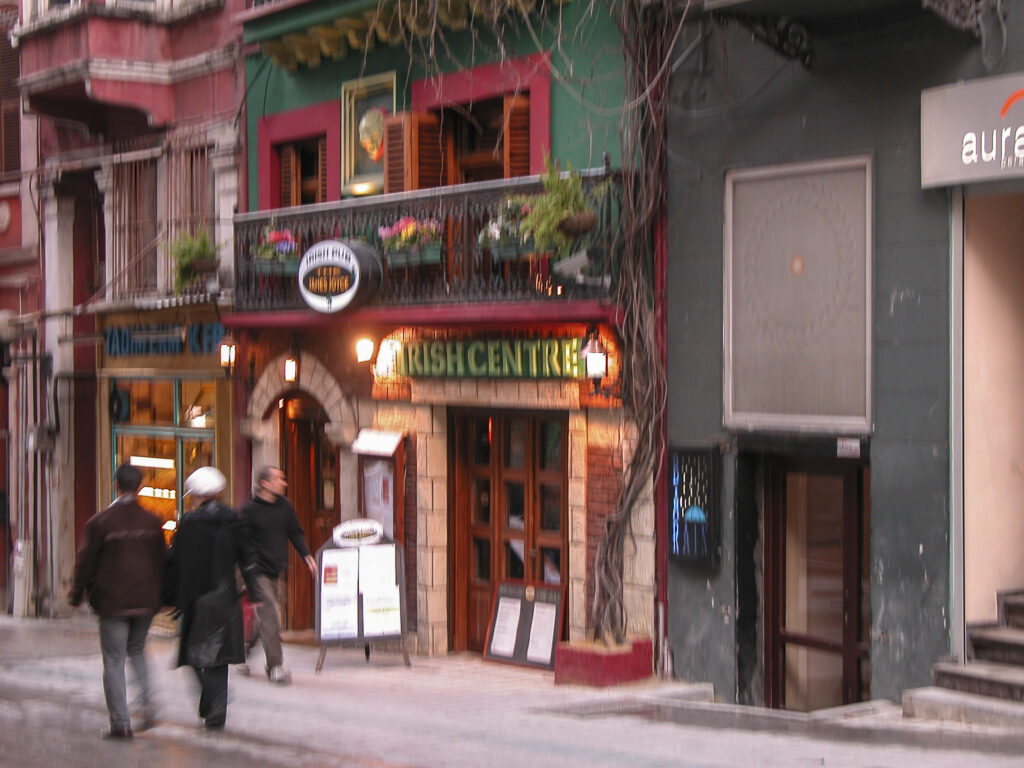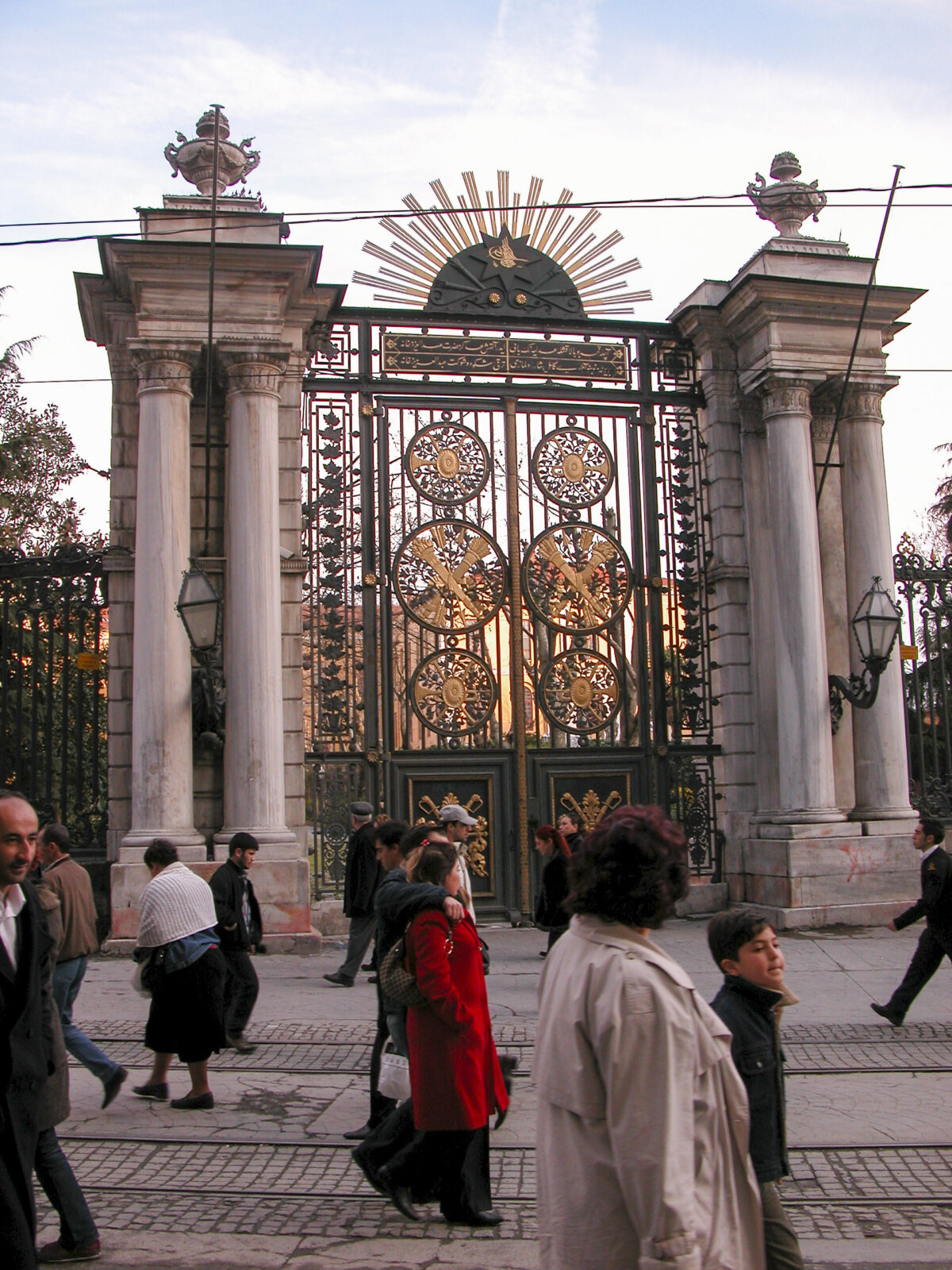Our first day in Istanbul was a whirlwind—up early, bus to Antalya, flight to Istanbul, Kandilli Observatory, the Blue Mosque, the Basilica Cistern, the Firça El Sanatlari Merkezi—by dinnertime we were mostly exhausted and ready for a full night’s sleep. But some of us had enough energy left to take an evening stroll after dinner. We didn’t go far, but we did get to explore a wee bit of the historic district in which our hotel was located.
The district now known as Beyoğlu was originally called Galata and later Pera, during the Byzantine period, when it became a base for merchants from Western Europe, mostly Venice and Genoa. In 1348 the Genoese built the Galata Tower, still the most prominent landmark in the area. After the Turkish conquest of Constantinople in 1453, Pera continued to be the foreign quarter and eventually came to house the embassies of several foreign countries. These all became consulates when Ankara became the capital of Turkey in 1923. The Russian consulate, for example, is located next door to the Hotel Richmond, far from the Basilica Cistern on the other side of the Golden Horn, which is why James Bond couldn’t have broken into the consulate that way. He would have done better to stay at the Richmond and tunnel through its basement to get into the consulate.
In the late Ottoman period, because of the foreign presence, Pera was the most modern part of Constantinople, the first to have electricity, telephones, streetcars and even a subway (built in 1875). It was also noted for its cosmopolitan cultural atmosphere, with theaters, cinemas, cafes, banks and elite schools all contributing to the amalgam.
In the twentieth century Pera, now known as Beyoğlu, went into decline for a time, but by the beginning of the 21st gentrification had set in and at the time of our visit it was again at the top of its game.
The historic main thoroughfare of Beyoğlu is Istiklal Street, which runs from Taksim Square most of the way to Galata Tower. It is closed to vehicular traffic, with one exception, and for that reason our tour bus could not pick us up in front of the hotel; we had to walk a few steps through an alley to a boulevard where the bus could park and wait for us.
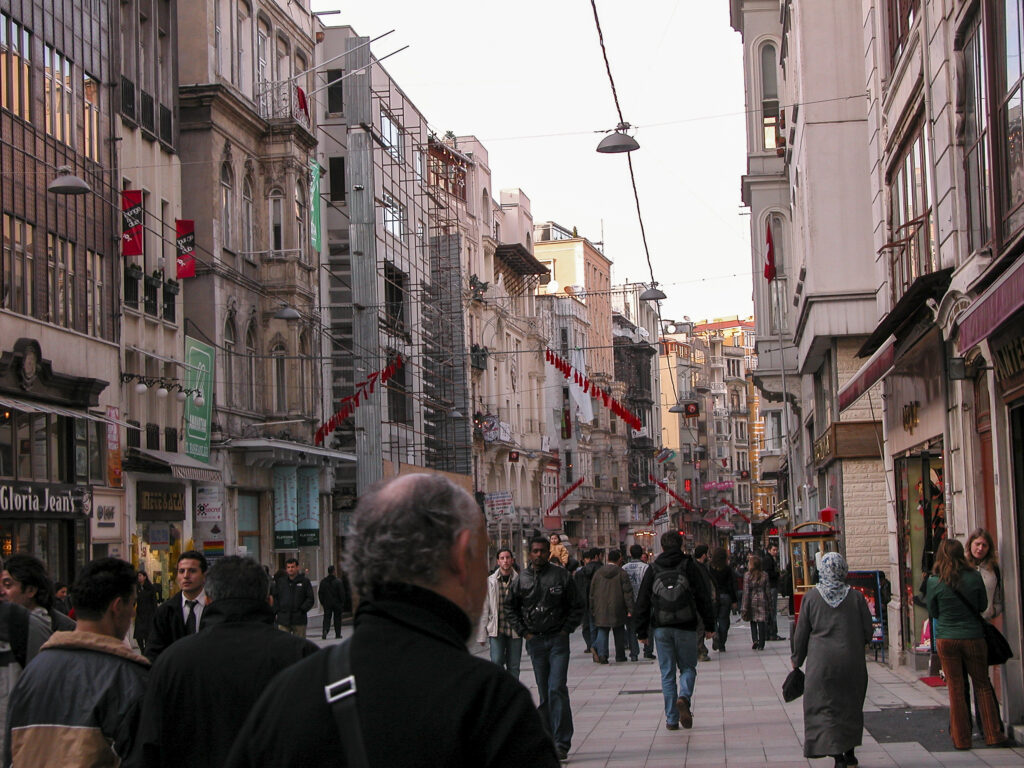
The one exception to the no-vehicle rule was the tram or streetcar, a relic of the 19th and early 20th century. It had been discontinued during the early Republican period but was reinstated during the early 1990s as part of the effort to restore the historic ambience of Istiklal Street.
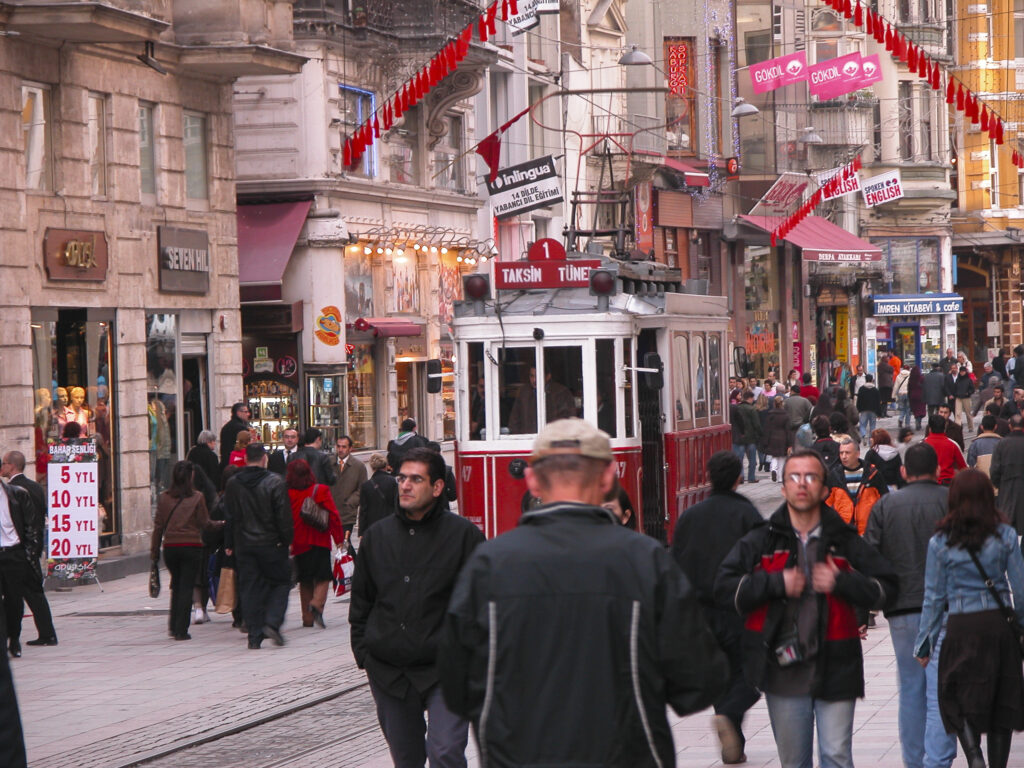
On Istiklal Street we encountered several American-branded coffeeshops such as Starbucks and Gloria Jean’s Coffee Bean and Tea Leaf, which seemed a bit ironic to me since it was the Ottoman Turks who had introduced coffee to Europe in the 17th century. I should note that Gloria Jean’s is now Australian-owned, though it originated in the USA.
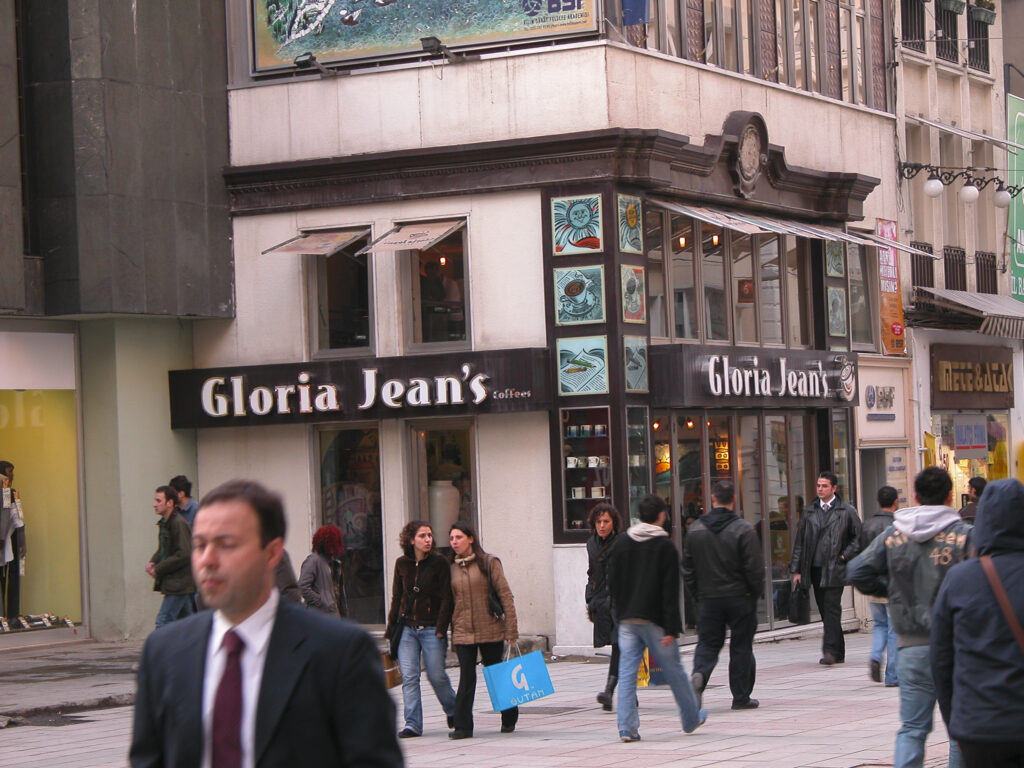
Since Beyoğlu was historically the center of the European community in Istanbul, it was no surprise to find a number of Christian churches on Istiklal Street. Christians and Jews comprise only 1-2% of the population of Turkey, and most of the Christian churches are concentrated in Istanbul, many of them in the Beyoğlu district. Pictured below is one of them, inconspicuously set back on a cul-de-sac off Istiklal Street, though the star-shaped ornament draws some attention to the location. It is the Surp Yerrortutyun Armenian Church, and it is a somewhat unusual church, because unlike most Armenian churches, it belongs to the Roman Catholic Church rather than the Armenian Apostolic Church, which is the national church of Armenia. It was founded by Austrian priests at the beginning of the 18th century, but burned down and was rebuilt in 1836, from which time the current edifice dates. We did not go inside – it was closed when we passed by – but the interior is said to be like the exterior, elegant though simple and unpretentious.
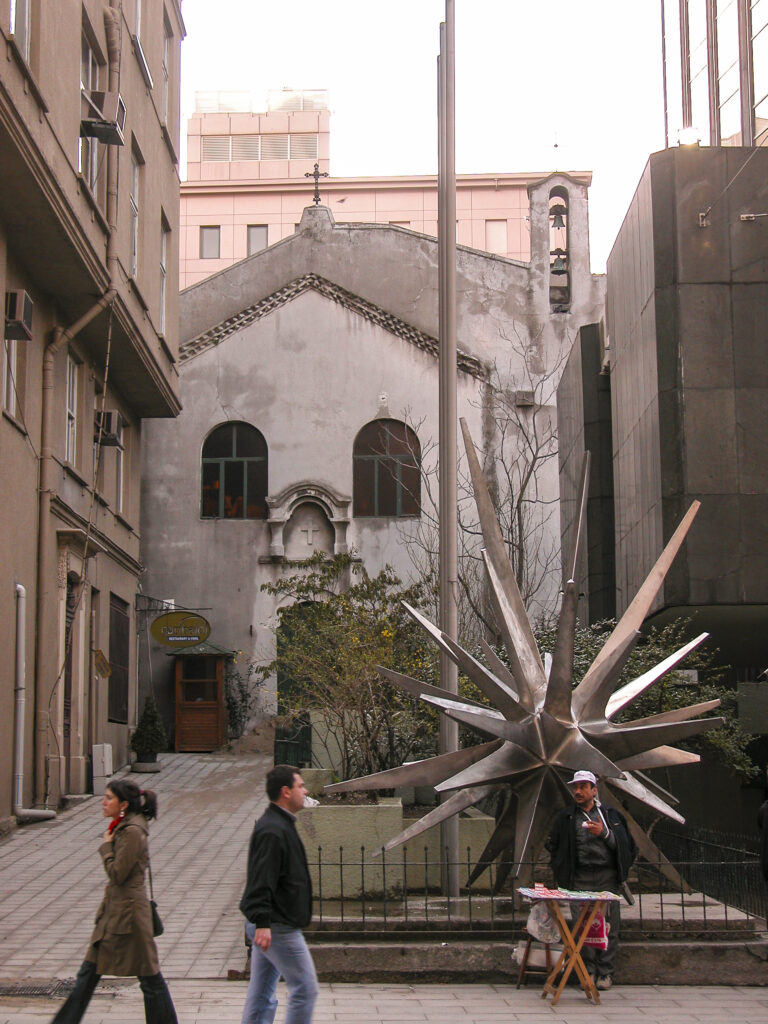
Beyoğlu is also home to the largest Roman Catholic church in Turkey, the St. Antonio di Padova basilica. The original church was built in 1725, but it was replaced in 1912 by the current Venetian Neo-Gothic style edifice. Pope John XXIII preached there for ten years, as the Vatican’s ambassador to Turkey, before being elected pope. He spoke fluent Turkish and was quite fond of Istanbul.
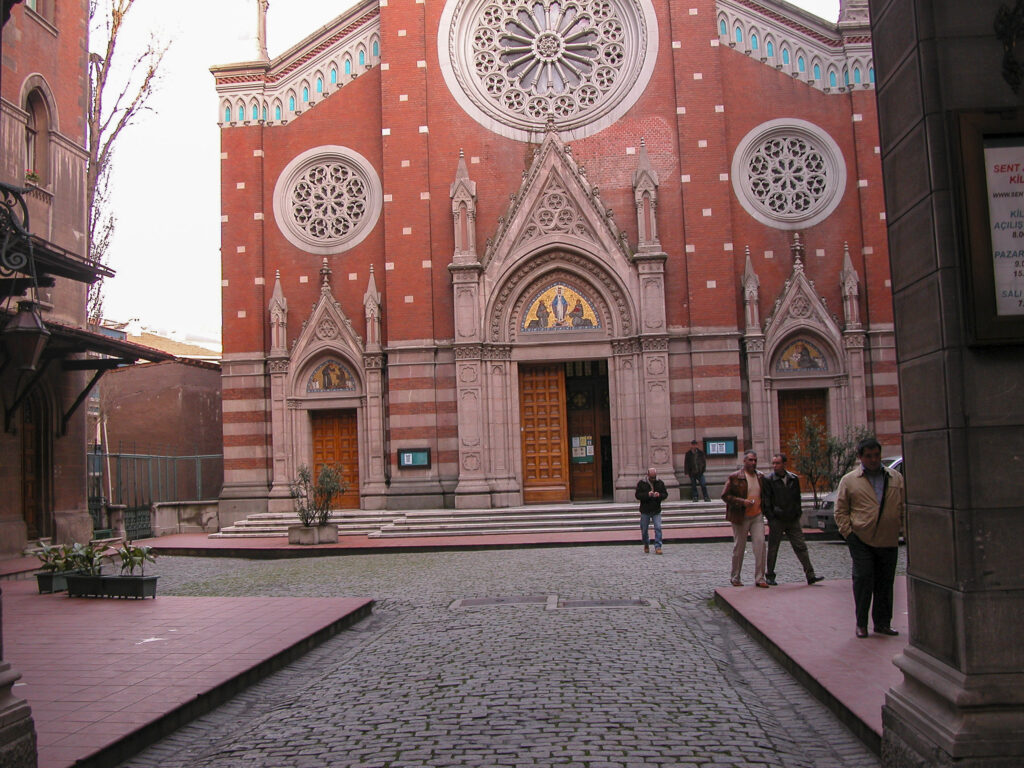
On our early-evening stroll we got as far as Galatasarai Square, the midpoint of Istiklal Street, between Galata Tower and Taksim and Tünel Square. The organ-pipe monument at the left of the photo below was erected in 1973 to commemorate the 50th Anniversary of the Turkish Republic by the architect Şadi Çalık.
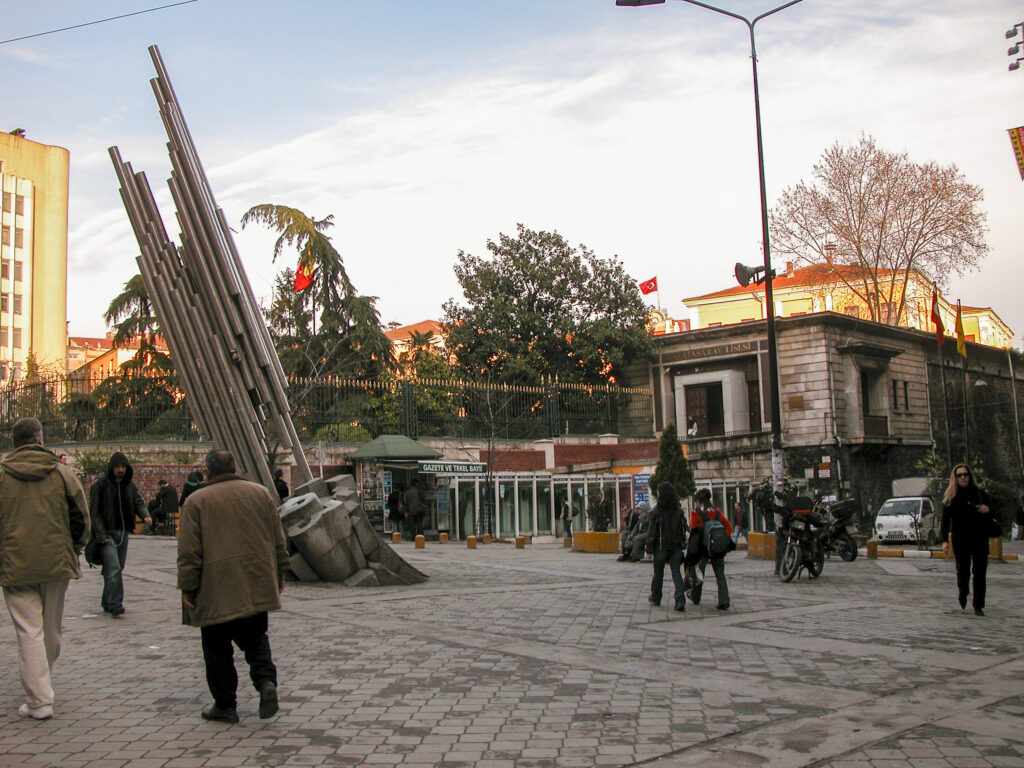
Galatasarai Square is named for Galatasaray Lisesi (High School), the oldest secondary school in Turkey, the ornate and imposing gate of which is pictured below. The school was founded in 1481 by Sultan Bayezid II as the Galata Palace Imperial School. In 1830 the modernizing Sultan Mahmud II transformed it into the Imperial Medical School, with mostly French professors teaching in French. In 1868 the Francophile Sultan Abdülaziz, impressed by the French educational system, turned the school into a French-style lycée, or high school. The language of instruction continued to be French; more teachers were hired from Western Europe; and the student body was drawn from all nationalities of the Ottoman Empire, especially non-Islamic religions and heavily Bulgarian.
Under the Turkish Republic, the name of the school officially became the Galatasaray Lisesi, instruction was conducted in both Turkish and French, a primary school was added, and the school was made co-educational in 1965. The student body is now about 40% female. As in the Ottoman period, the school continues to be an elite institution; though admission is open to all students, it is very competitive, with only those scoring in the top .03% on the national high school entrance exams being accepted.
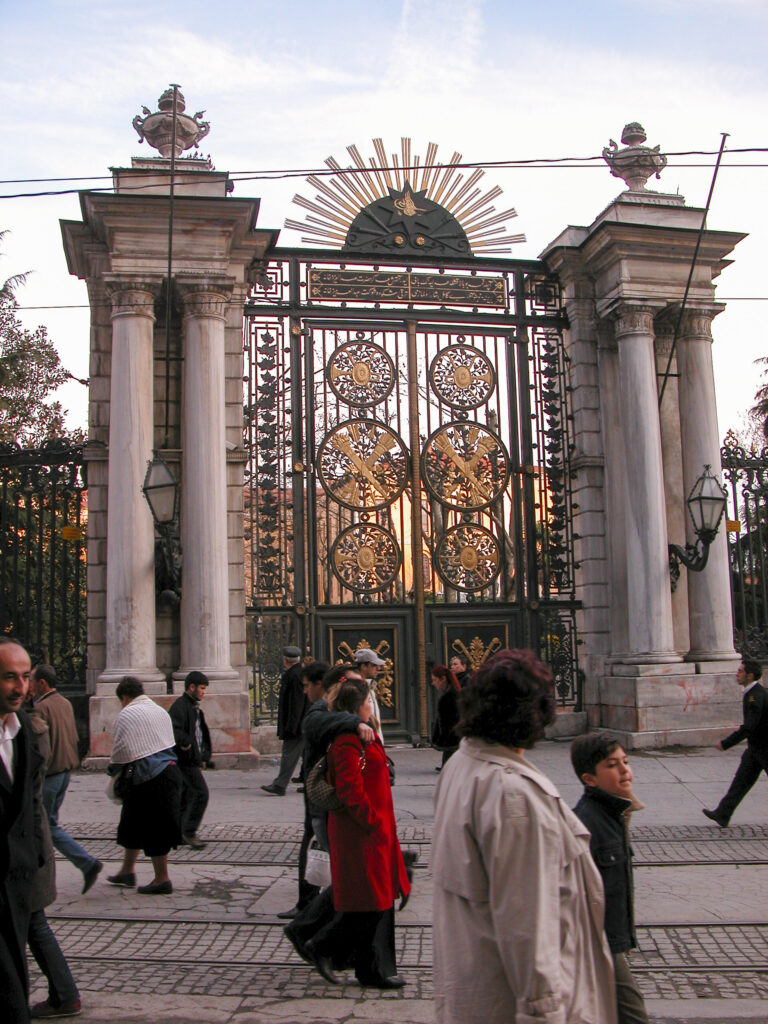
Had time permitted, I would have liked to venture into the side streets and alleys branching off Istiklal, which would have greatly enriched our experience of this fascinating area.
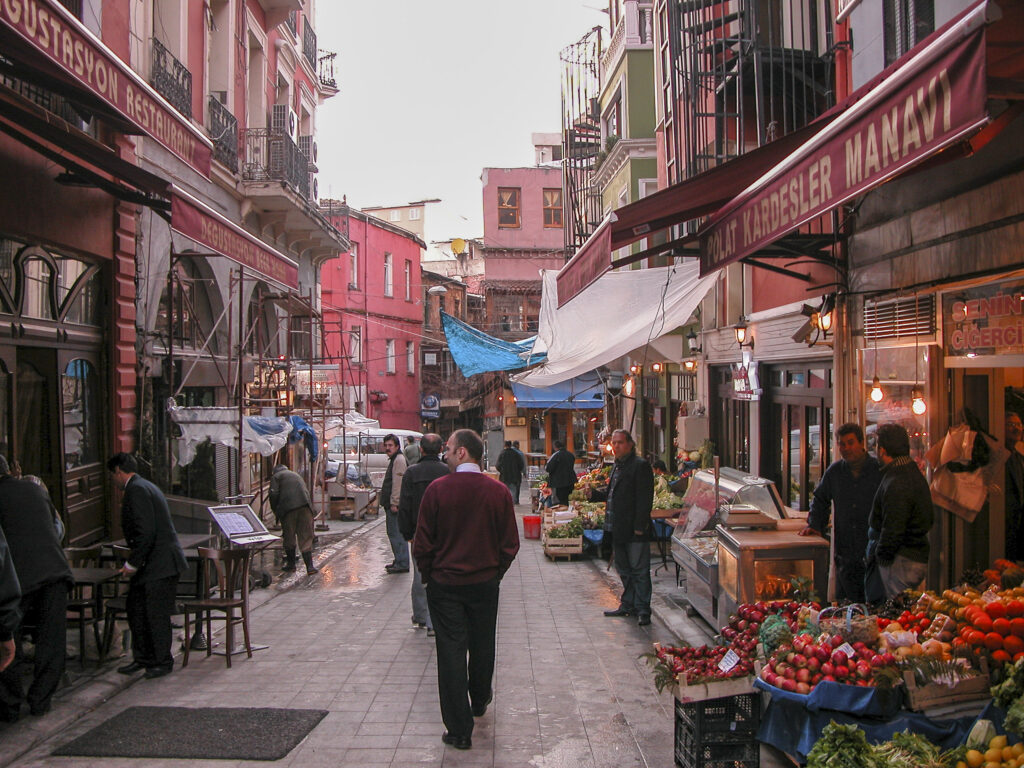
In the 1970s and 80s the Istiklal side streets were notorious for their bars and bordellos, but then gentrification set in; we saw plenty of bars and pubs, but no bordellos.
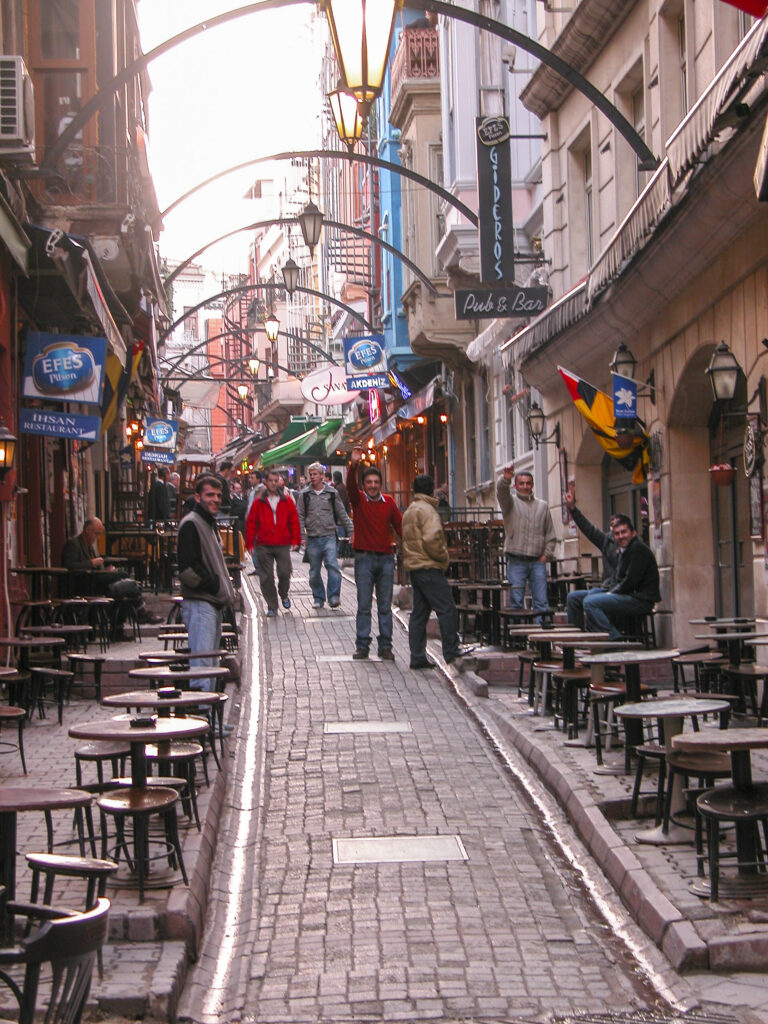
Although we didn’t see any evidence of any bordellos, the variety of eateries was staggering. Every type of cuisine in the world appeared to be represented, and there was something to satisfy every palate.
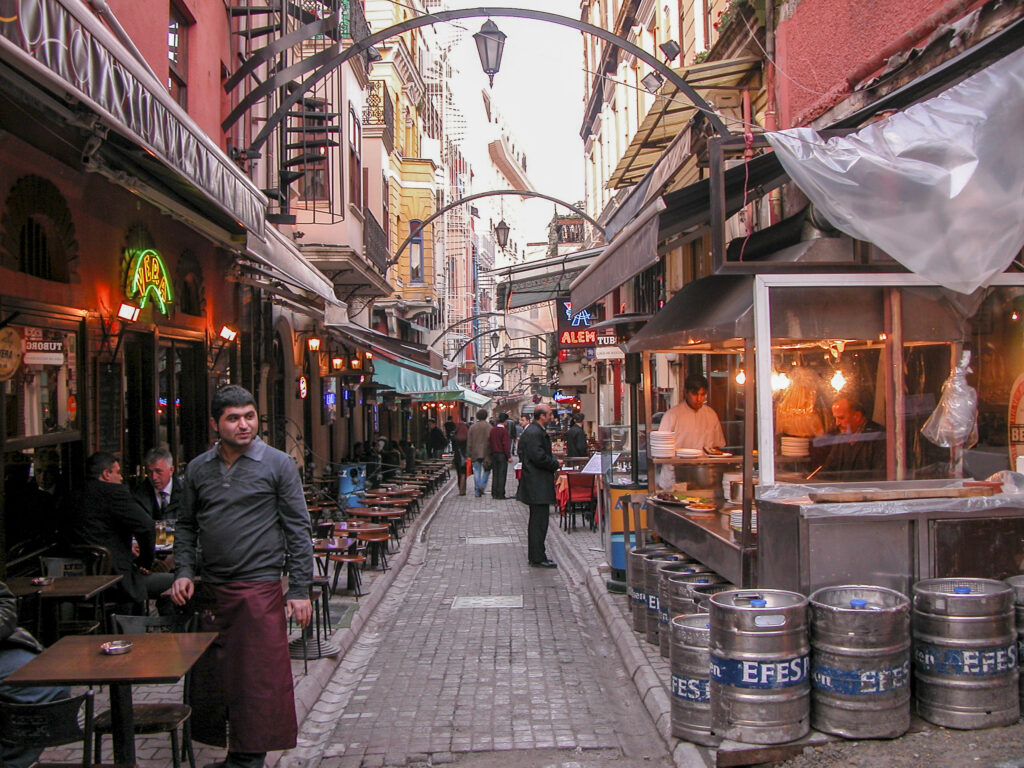
I remember seeing at least three Irish pubs on the side streets during our stroll down Istiklal. We didn’t have time to drop into any of them, but I was able to get a snapshot of the most photogenic of them.
